Moonshiners. 11 Soviet Caricatures About How They Were Driven, Drunk And Caught
From time immemorial, governments around the world have tried to monopolize or control the production of alcoholic beverages and to extract huge profits from their drink-loving subjects. And the population at all times tried and looked for ways to drink more and cheaper.
Especially for you, I have found and made copies of caricatures from the Soviet satirical magazines “Krokodil” and “Peretz”.
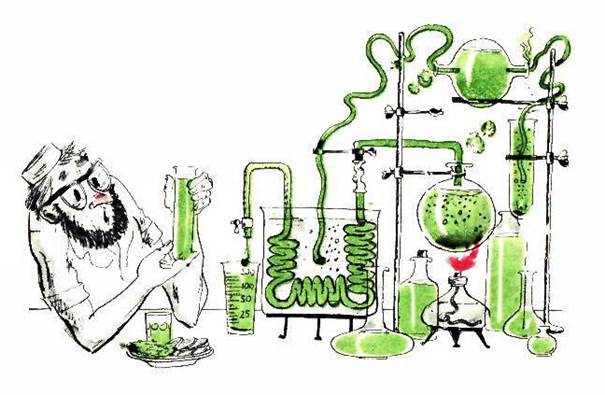
Artist I. Sychev, Crocodile 1965 No25
Figure caption:
– I can smell it with my nose that they are brewing moonshine somewhere…
The very word “moonshine” appeared in Russia in 1917, during the era of prohibition introduced in connection with the First World War. However, long before that, Russian people distilled mash at home and obtained a pure and strong drink.
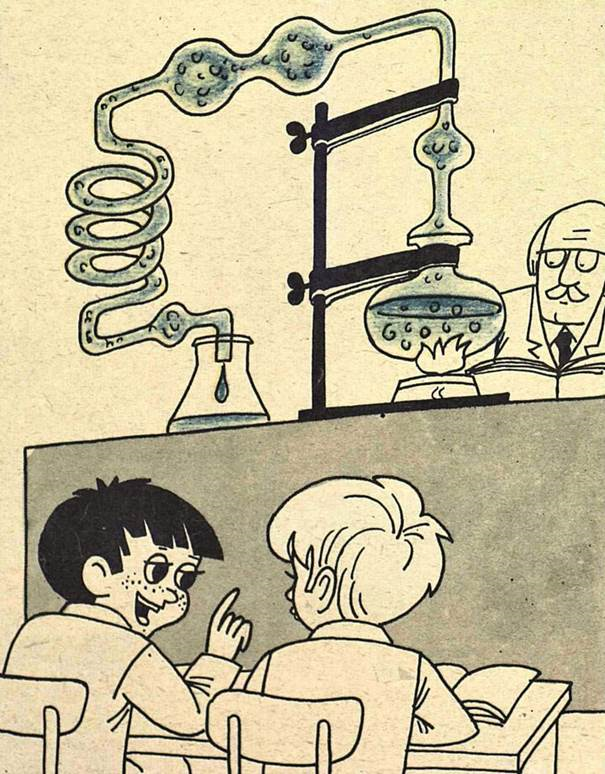
Artist V. Solovyov, Crocodile 1973 No22
Figure caption:
– Wow, it’s moonshine again!
For many, both then and now, homemade moonshine, made “with your own hands”, is better than any store-bought “swill”. And prosperity has nothing to do with it. Personally, I know very wealthy people who have equipped real mini-workshops with the most modern and expensive equipment in their homes, and drink only their own “product”.
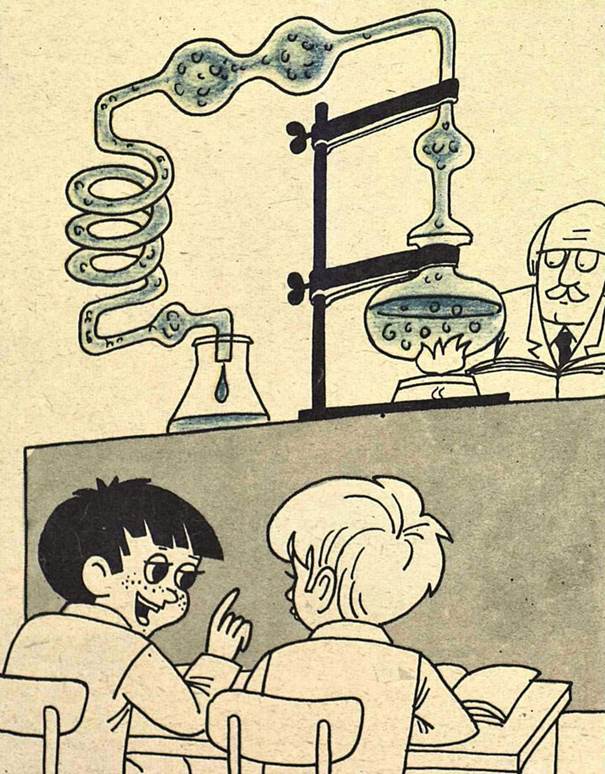
Artist S. Ilyina, crocodile 1980 No1
Figure caption:
“I don’t have anything to learn here, we have it all at home!”
For the Soviet Union, the sale of alcoholic beverages within the country was always the most important source of income. Therefore, any attempts of unconscious citizens to engage in moonshine for their own consumption, instead of buying products in state stores, were condemned and punished.
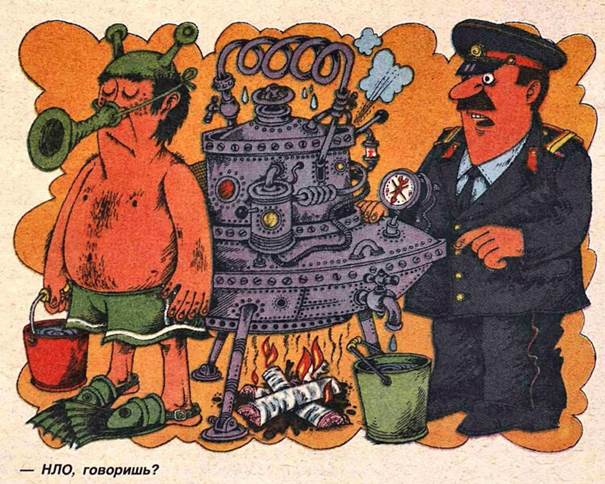
Artist S. Bogachev, Crocodile 1987 No35
And those who began to sell moonshine were perceived by the Soviet authorities exclusively as criminals. And not because they could harm the life and health of people. And not because they didn’t pay taxes. Because of them, the sales of state-owned factories were falling. This means that moonshiners are plunderers of state property.
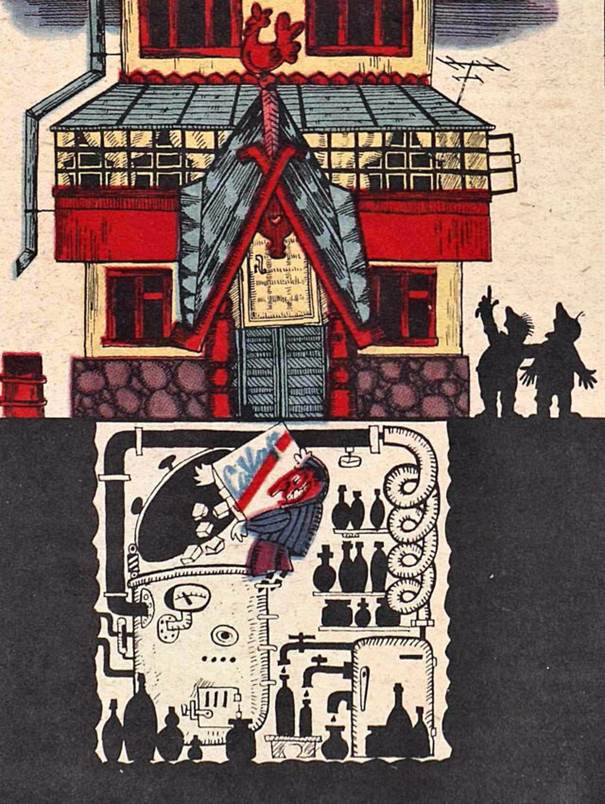
Artist A. Kapninsky, Crocodile 1987 No7
Figure caption:
– Karpych’s dacha has grown by leaps and bounds!
It must be said that for quite a long time moonshine flourished only in the villages. Low kolkhoz wages, the lack of permanent outlets and the habit of providing themselves with everything they needed, forced the peasants to choose not factory drinks, but proven quality from some grandmother.
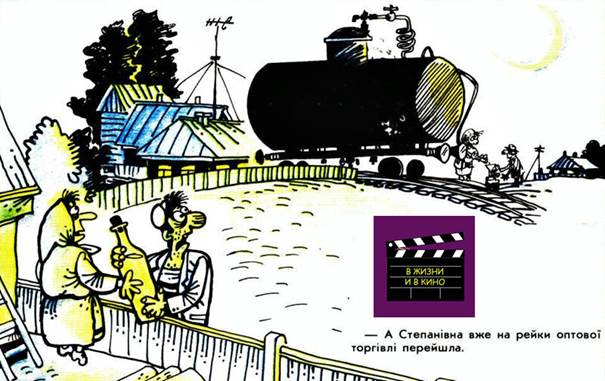
Artist V. Zelinsky, Peretz 1987 No16
Figure caption:
– Let’s go to Galina! Apparently, she has the most powerful moonshine!
In urban conditions, the price of vodka suited most people quite well. But everything changed by the anti-alcohol campaign launched under Gorbachev.
A sharp increase in prices, restrictions on the sale of alcohol (in terms of time, in terms of quantity per person) and in general a general decrease in the volume of alcohol production in the country did not lead to the fact that people began to drink less. Soviet citizens found a substitute for factory products in colognes, in household chemicals dangerous to health and, of course, in moonshine.
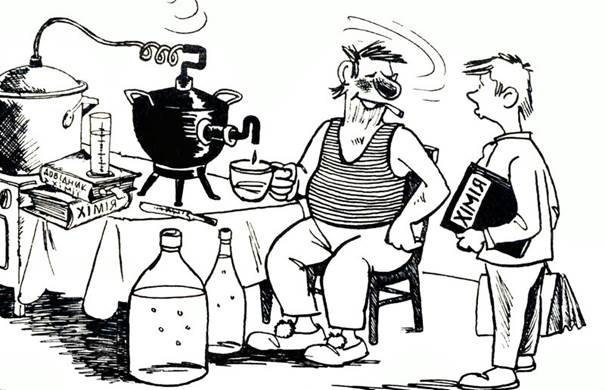
Artist A. Pomazkov, Peretz 1988 No12
Figure caption:
– Put a lot of chemistry on it, son! You see how much this science is needed!
It was in the second half of the 80s that the moonshine still conquered the city. I remember well how in our “Khrushchevka” from time to time there were characteristic smells that arose during the distillation of mash. It is not known which of the neighbors drove at the entrance (most likely, many), but they always did it on weekdays, in the evening. With lights on in all the windows, it was difficult for the police to identify the bootleggers.
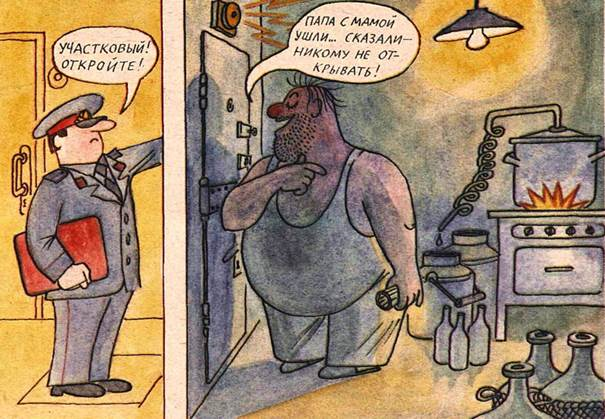
Artists A. Chizhikov, A. Shelepin, Crocodile 1990 No12
In the 80s, the heyday of moonshiners-speculators began. Huge demand led to the fact that almost every apartment building, especially somewhere on the working-class outskirts of the city, had its own “point”. Or even more than one. Where at any time of the day or night you could buy moonshine. Disgusting taste and quality, but cheap and readily available.

Artist O. Gutsol, Peretz 1989 No13
Figure caption:
– And Stepanovna has already switched to the rails of wholesale trade.
The police fought the moonshine trade as best they could. But often the district police officers themselves “protected” the traders, receiving a “kickback” from them with the same moonshine.
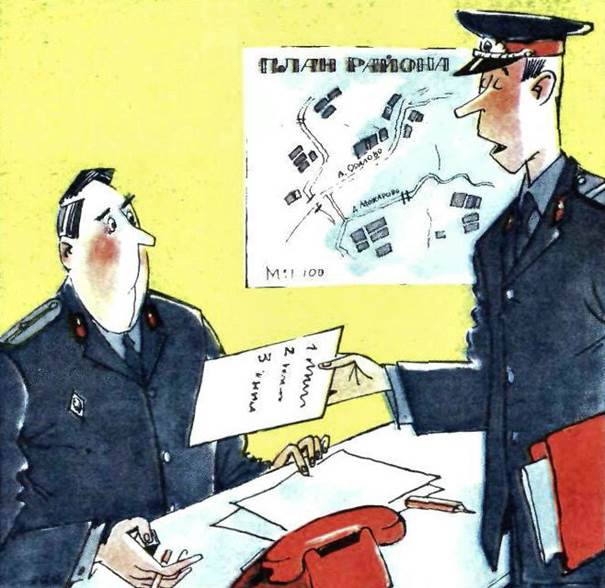
Artist I. Novikov, Crocodile 1988 No15
Figure caption:
– Here is a list of people who do not make moonshine in our area!
Mass moonshine brewing in the second half of the 80s caused a shortage of sugar in the Soviet Union. Previously useless caramel candies were bought en masse. And homemade jams began to be used not for tea drinking.
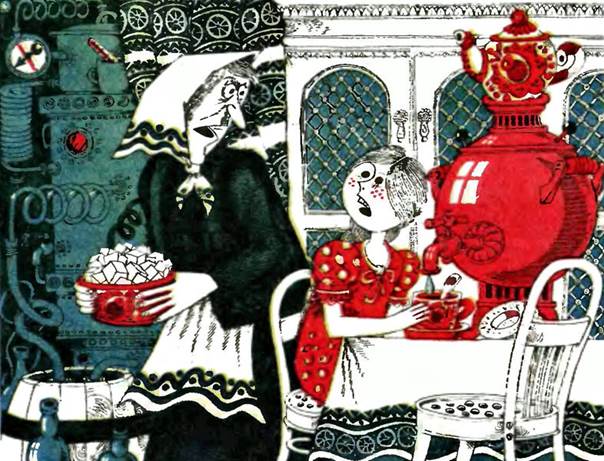
Artist S. Bogachev, Crocodile 1987 No30
Figure caption:
– Stop chasing teas! And so there is not enough sugar!
